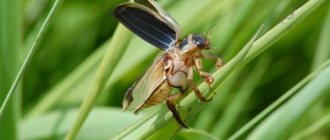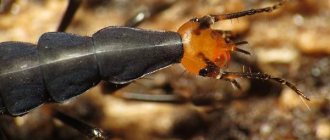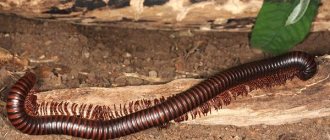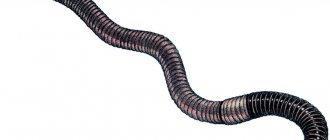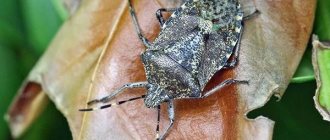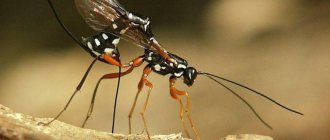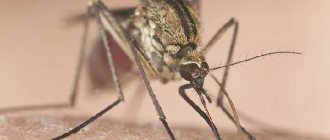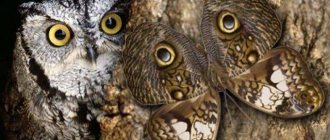Description and features
This beetle is capable of making an impression at first sight. First of all, he amazes with his strong physique and extraordinary size. Specimens of individual subspecies can boast a length of more than 9 cm.
In addition, a very noticeable part of this insect is a pair of polished brown, sometimes with a reddish tint, mandibles, that is, upper oral jaws, giving the entire appearance of the giant a very original, almost fantastic look.
The mandibles are so huge that they make up a third of the length of the body, and only in some varieties they do not stand out too much. Although these are jaws, due to their size, it is not possible to chew or gnaw anything with them. This is a bug weapon.
Male individuals, in which the indicated oral structures, as well as the entire body, are much more developed than in female beetles, use them during competitions with each other, constantly starting quarrels among themselves.
Such mandibles are equipped with serrations and bizarre processes, which makes them look like deer antlers. Such associations prompted man to give this biological species the name stag beetle . However, the mandibles of the described insects, of course, have nothing in common with the horns of artiodactyls.
These are rather claws, like those of a crab or crayfish, with points directed inward, like curly sugar tongs. They are even equipped with teeth, and therefore the beetles bite with them, and do not butt, and so seriously that, in principle, they are capable of damaging even a human finger extended to them, but they do this in exceptional cases, because they use this weapon only in the fight against their fellows.
Parts of the elongated body of beetles are, first of all, a flat top, rectangular-shaped, black head, equipped with faceted eyes on the sides and antennae protruding from the front, constructed from movable plates. Attached to the head is a chest of the same color, equipped with powerful muscles.
And behind it comes the abdomen, completely hidden by hard, dense elytra, predominantly reddish-brown in males and brown-black in females, often covered with a pattern that is individual in each species. Behind these protective formations are thin, delicate, veined wings.
Beetles also have six long, segmented legs. Their legs have a pair of claws with bristles at the end, which allows the beetles to climb trees. The sensory organs, in particular smell and taste, are the palps with hairs located on the lower jaws. The impressive appearance of this giant from the world of insects is shown in the photo of the stag beetle .
Stag Beetle (Red Book): Brief Description
The insect has a massive body, which is represented by a flat head, a fleshy abdomen and a dense chest. The beetle's wings are protected by large, hard elytra. On the head there are eyes with a facet structure, a mouth opening, as well as appendage processes similar to horns. It also contains a pair of antennae formed by individual segments.
The stag beetle's mouth allows the insect to perform several actions. The tentacles allow the capture of young plant growth. The peculiar horns also act as a formidable weapon during fights with relatives for the right to mate with females. Movable jaws are used during the absorption of plant juice.
The thoracic part of the body includes the posterior, anterior and middle segments. A pair of legs, divided into segments, is attached to each of them. The beetle's limbs end in sharp claws, thanks to which the creature is able to firmly cling to a variety of surfaces.
Dense large elytra act as a kind of armor for the insect, protecting the body from damage. Below them is a pair of membranous wings that are used for flight. There are also special tubular structures that perform the functions of the respiratory organs.
Kinds
The described insects belong to the family of stag beetles. Its representatives are coleopterous beetles, which have mouth mandibles protruding far forward and equipped with teeth.
The family of stag beetles includes a whole genus of stag beetles that live in Europe (about two dozen of them are found in Russia alone) and North America, but most species were concentrated in the eastern and southern regions of the Asian continent. Let us describe some types of these horned creatures.
1. European stag beetle . Its range extends widely across the continent, spreading from Sweden in the north through the entire European territory to the south, all the way to Africa. And to the east it extends to the Urals. In this part of the world, this horned titan is the champion in size, which in males reaches up to 10 cm.
2. The giant stag beetle , being an inhabitant of North America, even exceeds its European counterpart in size, although only by a couple of centimeters. In other respects, it is similar to him, only the brown body color is somewhat lighter in tone. But, like most representatives of this genus, the females of such beetles are much smaller than their gentlemen and rarely grow more than 7 cm.
3. Wingless staghorn , settled in the Hawaiian archipelago, in particular on the island of Kauai, has many differences from the previous two species. Compared to them, his chewing was quite small. These are neat formations curved towards the center. They rather resemble cow horns rather than deer horns. These creatures are black in color. Their elytra are fused, which means they are not able to straighten them and fly. Moreover, the lower wings, although present, are too poorly developed.
4. North African stag . Compared to the European and American giants described above, it is small, but individual specimens of such insects are very beautiful, and therefore in demand among collectors. The so-called horns are not at all a prominent part of such beetles. But the color schemes of various parts of the body, creating unexpected contrasts, harmonize pleasantly.
5. The rainbow stag beetle is also surprisingly beautiful with its multi-colored tints. There are specimens of copper-red, sunny yellow, green and blue colors. And therefore, such pets are bred by nature lovers at home. The horns of these creatures are curved upward at the ends. Their homeland is Australia. The beetles usually do not exceed 4 cm in size, and there are also very small specimens, especially among the female half.
6. The Chinese stag has jaws in the form of two crescents looking at each other. The color of the beetle is black and shiny. Its head and chest are muscular, well developed and wider than the abdomen, ovally rounded at the end. This species has two subspecies, the difference of which lies in the degree of development of the mandibles.
7. The titanium beetle lives in the tropics and reaches a length of more than 10 cm. It is distinguished by a large head, comparable in size to the rest of the body. Its horns look like the ends of pliers.
8. Dybovsky's stag in our country lives in the Far East, and is also found in China and Korea. This beetle is not particularly impressive in size; on average, the length of males is about 5 cm. Its horns are figured and large. The most common color of the elytra is dark brown; yellowish hairs cover the body on top. The female half is painted in darker tones, up to charcoal black.
9. Grant's stag comes from South America. He is a very large representative of the stag family. Its mandibles resemble ring-shaped downward curved tusks covered with small teeth. They are so long that they are larger in size than the body of the insect itself. The front part of the beetle has a golden-green color with iridescence, and brown elytra are visible behind them.
Habitat of the stag beetle
The stag beetle is found in oak forests, deciduous forests in floodplains, mountains, and plains of Europe, Kazakhstan, Ukraine, Turkey, Iran, Asia and North Africa. Insects prefer deciduous trees, in particular oak, but they can also be found on pine, ash, beech, linden, and poplar.
The stag beetle is also found in Russia, mainly in the European part of the country. Local populations are observed in the Penza, Voronezh and Kursk regions. In the north, the insect was seen in Samara, Ryazan, Pskov and other regions.
Lifestyle and habitat
The stag beetle lives on the plains, but is also found in not too high mountain areas. The favorite places for insects to settle are deciduous oak forests, as well as mixed forests. They are also found in groves, forests and parks. Tropical beetles prefer palm thickets.
Stags exist in colonies, and for their emergence and successful establishment, old forest areas with a large number of fallen trees, their branches and trunks, and rotten stumps are needed. The fact is that it is in this environment, that is, in semi-decomposed wood, that the larvae of the described creatures develop.
Flight of these beetles in temperate latitudes begins in May and lasts several weeks. More precisely, the time frame is determined by weather conditions and varies significantly depending on the geographical location. The latter factor also affects the daily period of activity. In the northern regions it occurs at dusk, while the southern beetles are active during the day.
Most often, the male half prefers to rise into the air using wings. But flyers usually do not cover distances of more than three kilometers, although they move quickly and are capable of maneuvers. Beetles can take off successfully only from a certain height and rarely from horizontal areas, so they prefer to take off from trees.
The wild nature is full of dangers for such creatures, because their enemies are birds of prey: owls, eagle owls, magpies, crows, as well as insects, for example, parasitic wasps, the offspring of which devour beetle larvae from the inside.
But this is not the main danger for stags. Under the influence of humans, the world is changing, and with it the habitat of these insects, that is, forests full of rotten wood. In addition, collectors are attracted by the unusual appearance of such creatures. Therefore, when conducting raids through forests, they cause great damage to their population.
But still, measures are being taken to protect the horned giants. Is the stag beetle in the Red Book or not ? Of course, and not only in Russia, but in many other European countries. Conservationists are trying to preserve old forests, especially oak ones. Wildlife sanctuaries are being created to breed endangered beetle species.
What factors affect the decline in species numbers?
The danger for the stag beetle from the Red Book is the following:
- Unreasonable, wasteful human activity. In particular, the destruction of oak trees in order to obtain valuable wood. Clearing forests of rotten wood, which serves as a source of food for insect larvae, also has a negative impact.
- Population growth of the scopy wasp. This parasitic insect reproduces by laying its own eggs in the body of stag beetle larvae.
- Representatives of the species act as prey for numerous forest inhabitants, for example, birds such as magpies, owls, and eagle owls. Birds love to hunt stag beetles because these insects have a large, extremely nutritious fleshy abdomen.
- To a certain extent, the number of representatives of a rare species is reduced by the activity of people who are fond of collecting insects.
Nutrition
The beetle larvae grow on wood, feeding on it. Moreover, they do not need high-quality wood, but dead wood, simply rot. They are also not interested in living but diseased plants. Again, their varieties are very important. The favorite delicacy of the larvae is pedunculate oak and some other forest trees, but very rarely fruit trees.
Such food is no longer suitable for adults. What does a stag beetle eat ? In addition to dew and nectar, it feeds on the juice of young shoots of plants. In the literal sense, giants can also be called mash lovers. The greatest joy for them is to find a suitable oak tree, whose trunk has cracked from severe frosts in winter.
And with the arrival of warm days, through the cracks that have formed and have not yet healed, juice is baked out, which is very tasty and sweet for the beetles. Seeping through fresh cracks, from the heat of the generous summer sun it ferments a little and begins to foam.
Such “wounds” of oak trees are a desirable source of strength for these insects. This is where the giants' favorite drink comes into being. Here beetles graze in groups, gathering on tree branches. If there is plenty of juice, the feasting community interacts peacefully. But when the source begins to slowly dry up, then the warlike nature of the stags manifests itself.
For the most part, males initiate fights. In the fight for the “magic” drink, they organize real fierce tournaments. This is where the devices bestowed by nature come in handy - huge horns. After all, the upper jaws of the stag beetle exist for fighting.
Such battles most often turn out to be a very exciting spectacle, and the giants compete not in jest, but seriously. The strength of these creatures is truly heroic. One has only to mention that the weight they lift exceeds their own by a hundred times. By placing the enemy on the horns, the winners throw the losers off the branch. And the strongest remain at the blessed source.
Reproduction
The breeding season is characterized by characteristic duels among stags. Powerful mandibles are used to organize jousting tournaments, when two males must tear their opponent off the bark and throw them over themselves. The winning male receives rights to the female. Reproduction occurs sexually, and the average larval development cycle is 4-6 months.
The female lays up to 20 oval yellowish eggs in a specially allocated space consisting of dry tree branches. Incubation lasts from 3 to 4 weeks, after which the stag larva appears on the surface. At that stage, they have a fairly massive head and legs that make chirping noises. The larvae feed on dead tree bark. At the end of the stage, the larva reaches a size of 10 centimeters in length. These representatives can remain at the larval stage for up to 6 years, after which they move to the next phase of development. The stage of transformation into a pupa develops at a depth of up to 40 centimeters. For most individuals, this stage begins in the fall and ends with the onset of spring. Pupae are no more than 4 centimeters in size. After this stage comes the final adult phase, which is characterized by a fully formed insect.
Reproduction and lifespan
The mandibles of male heroes also turn out to be useful when the time comes to continue the race of giants. With hooked mandibles, they hold their partners during the mating process, which can last up to three hours.
The female stag beetle then, gnawing through wood rot, creates peculiar chambers in the bark. And when the time appointed by nature comes, he leaves eggs in them, no more than 20 in total. They are yellowish in color, oval in shape, and small in size: their elongated part is about 3 mm long.
After a month and a half, soft-bodied, elongated, cream-colored organisms emerge from them. They have legs for movement; a body consisting of many segments, and a red-burgundy head, on which the rudiments of future “horns” are already visible. These are stag beetle larvae . At the moment of conception they are curved, like a tiny embryo, and as they grow they reach a length of up to 14 cm.
The main part of the life of the future stag goes through this stage. And this period continues for several years. No one knows how much exactly. It all depends on the conditions in which the organism finds itself.
Such an existence can last a year or two, but under favorable circumstances at least four years, and sometimes more than six or even eight. The larva lives in wood rot, feeds on it, and also overwinters in the bark, where it is able to successfully survive even in severe frosts.
However, sooner or later the year comes when pupation occurs. Most often this happens in October. And in the spring, in May, sometimes in June, an already adult beetle appears to the world. The horned giant itself does not live long, about a month or a little more. He fulfills his duties to nature to procreate and dies.
Identification difficulties
As usual, I read what Wikipedia writes. It turned out that there is plenty of information about stag beetles. There is no point in doing additional research, collecting data from scattered sources and writing an article about this insect, as was the case with the common T-shirt - everything is already collected, structured, and designed. The beetle turned out to be not an easy one; it has attracted attention for centuries. Anyone interested in entomology can easily find a complete and brief description of the stag beetle on the Internet. I will limit myself to posting photos and some facts that seemed interesting to me. Well, and, at the same time, with my own observations.
In the last 30 years I haven’t had to pick up beetles often, but this one didn’t cause any hostility or rejection. By the way, our youngest child, quite recently, from the age of one and a half to three, showed great interest in all kinds of beetles. Without any fear, she collected everyone who crawls. Once, even on the playground near the house, she got into a fight with a one-year-old boy because he took her bug) But in kindergarten, this naive interest was quickly put under a horror ban. Now, when a child sees insects, even completely harmless ones, the first reaction is to freeze and make a loud, deliberately frightened cry.
The insect found turned out to be large, about 4 cm in length. For a female, according to the same Wikipedia, this is normal “growth”. But male stag beetles have long upper jaws that resemble horns - hence the name of the insect. Many have probably seen such stags in the wild or in popular science programs. I came across them more than once in my childhood. The male’s body is only slightly larger than that of the female, but plus 3-4 cm of magnificent “horns” - and we get the largest beetle in Europe (fact).
I was confused when trying to get to the bottom of the truth about what kind of insect I came across, a couple of things:
- The beetle, by description and photo, is very similar to a close relative of the stag beetle (Lucanus cervus) - Lucanus barbarossa
(Wikipedia), living in Portugal, Spain, Algeria and Morocco. I had already decided that it was him (tourists could have brought it in by accident), until I noticed that
barbarossa
, unlike cervus, has 6 segments of antennae on the club, not four. It would seem such a small thing... - Even among Lucanus cervus, the stag beetles, there are several forms that differ (as far as the males are concerned) in the size of the “horns,” which are scientifically called mandibles. Such polymorphism is caused by environmental conditions, the amount of available food and the development conditions of the larvae. So, the f.minor
, which differs from the f.media and f.major males by smoother head protrusions and weakened short “horns”-mandibles, can be confused in appearance with a female of the same species. If it were not for one “but” - in males the head is noticeably wider than the body, in females it is narrower.
Previously, I had no idea what a female stag beetle looked like. Now I know. Almost certainly) Almost - because I still make some percentage of errors in identifying the species.
Home care and maintenance
Such insects are born and spread not only naturally. People also breed these beetles with remarkable external characteristics artificially. First of all, this is done to restore the stag population.
Suitable conditions are created for their growth and development, and real pyramids are erected from oak rot. The basis of these “houses” are tree trunks driven into the forest soil. And in this favorable microclimate the beetles lay, the larvae of stag beetles develop and thrive.
Insect fans also breed beetles at home, which gives them the opportunity to observe the life of these creatures. Specialist breeders raise beautiful specimens of staghorns also for sale. This process is difficult and lengthy, requiring patience and the necessary knowledge. And this is how it goes.
Suitable containers are taken (no matter what material they are made of) and filled with sawdust. They contain the testicles of stag beetles. Now the main thing is to ensure that the humidity and temperature in this cage is close to natural.
Here, careful monitoring of the development of the larvae is necessary in order not only to ensure their proper formation, but also to protect them from parasites and fungal diseases. If everything is done correctly, then in five years a miracle will appear to the world - a domestic stag beetle , and perhaps more than one. These pets are fed sugar syrup, to which you can add juice or honey.
Conservation status of the stag beetle in Russia and other countries
The number of insects is rapidly declining. At the same time, the stag beetle population is low almost everywhere. In some countries the species is no longer found (Latvia, Denmark, Estonia). At the moment, the stag beetle is threatened with complete extinction.
In central European Russia, the insect population is extremely low and continues to decline. The species is included in the Red Book and belongs to category 2. Larger populations of this beetle can be found in Crimea. The species is also relatively common in the southern regions of Ukraine. The stag beetle is included in the Red Book of the following countries (belongs to category 2):
- Germany;
- Moldova;
- Poland;
- Sweden;
- Kazakhstan;
- Belarus;
- Ukraine.
The only possible conservation measure is to preserve in their original state the biotopes in which insects live, by creating entomological reserves in the territory of oak forests and other forests with an admixture of oak, limiting the cutting down of old oak forests and preserving individual old-growth oaks. In Russia, the species is protected in a number of nature reserves:
- Caucasian;
- Zhigulevsky;
- Voronezh;
- Forest on Vorskla;
- Central Black Earth;
- Bashkir.
In many European countries, various monitoring programs are being conducted to study the number and distribution of the stag beetle.
Benefits and harms for humans
Every organism is necessary for the ecosystem. It can harm some biological species, but as a result it necessarily benefits others, because nature is harmonious. But our horned giants are in some ways exceptions.
By gnawing through egg chambers and eating rotten wood during the larval stage, the beetles do not harm trees. They do not touch living plants, so we cannot say that these insects cause damage to forests and green spaces. They are only interested in rot, and therefore they do not destroy human wooden buildings.
In addition, by eating rotten trunks, stumps and branches, beetles clean the forest and act as its orderlies, which means they have a positive effect on all nature, including humans. There are also myths about stories that these creatures are capable of harming people or large animals with their horns. All this is meaningless fiction. Small organisms also do not suffer from staghorns, because they are not carnivorous.
So it turns out that the stag beetle insect brings nothing but benefits, being a completely harmless, albeit frightening-looking, horned giant. The only person horned giants are harmful to is their own kind. And this is true, because such insects are very aggressive towards each other.
How is a female stag beetle different from a male?
The female stag beetle is much smaller than the male, and males also have horns (mandibles) that females lack. A male stag beetle was caught in Europe that was 9 centimeters long, and one of the beetles discovered in Turkey was 10 centimeters long! It is also known that the male is more likely to fly than the female.
Stag beetle: male on the left, female on the right
Interesting Facts
Hornbills are amazing creatures, so their life simply cannot help but contain a lot of interesting things. Many interesting facts have already been told earlier. But there is also something I would like to add about the wonderful horns of these creatures and some other things.
- As you know, stag beetles are capable of flight. But their huge branched horns greatly disturb them in the air. To maintain balance, they have to take an almost vertical position during flight;
- Young beetles have horns from the first moments of their existence. As already mentioned, they need these devices to fight other beetles. Only their warlike aggression does not make itself felt immediately, but under the influence of circumstances. Unless there are special reasons, beetles, although they do not show great friendliness towards their own kind, do not harbor hatred either;
- The mandibles of staghorns are clear proof of how intelligently evolution works. If the toothy jaws of beetles had been preserved in their original form, that is, with sharp ends existing for grinding food, like their very distant ancestors, the pugnacity of the males would have led to the death of many individuals, and therefore the entire species. But the strong giants are only capable of raising their horns and throwing back the enemy with minimal consequences for him;
- Hornbills can fight not only over food, but also for the right to own a female. Before the start of the battle, they try to immediately make the right impression on the enemy. During this, the beetles stand on their hind legs, rearing up and demonstrating their strength;
- The weapons of males are horns, that is, the upper jaws. But females bite with their lower jaws, and quite strongly;
- The stag beetle was made famous throughout the world by the cartoon, which was one of the first to be published back in 1910. Since then, such insects have really become popular, and their image has appeared on coins and postage stamps.
Human activities have a detrimental effect on the population of these unique creatures. It is rapidly declining, and the biological species itself is considered endangered, despite active conservation measures. To draw people's attention to this problem, the stag beetle has been repeatedly recognized as the insect of the year in many countries. In particular, this happened in 2012 in Germany.
Stag beetle (Lucanus cervus). Description, photo and video of the stag beetle
The stag beetle (Lucanus cervus) belongs to the phylum Arthropods, the class Insects, the genus Lucanus of the Staghorn family. It holds the palm in Central Europe, it is considered the largest beetle, males reach an average of 70-74 mm, and females 25-57 mm in length.
There is documentary evidence of a record body length, counting the “horns,” of a 95 mm male stag beetle caught in Europe.
It is found in oak forests and deciduous forests with an admixture of oak, artificial plantings - parks, gardens in Europe, Western Asia, Turkey, Iran and even North Africa.
It belongs to the species whose habitat is declining, and therefore has been listed since 1982 in the third appendix of the Berne Convention and in the Red Data Books of many European countries as a species declining in number.
The reasons that lead to a massive reduction in the stag beetle population are massive deforestation, primarily oak forests, clearing forests of rotten and rotten stumps and snags in which the larvae develop over the course of 6-7 years.
In recent years, there has also been an unlimited collection of beetles in collections, and natural predators of birds significantly reduce the population size by feeding on beetle larvae.
The color of the elytra is dark, violet-brown with reddish-brown enlarged mandibles, which form the so-called “deer antlers”. The elytra of beetles are not pubescent.
The stag beetle is characterized by sexual dimorphism: males are larger, their mandibles are better developed and much larger, the eyes are half divided by a buccal protrusion, and the upper lip is curved down.
Since the stag beetle belongs to the class Insects, its organs and organ systems have a similar structure in comparison with other representatives of this class.
The body and limbs of the stag beetle consists of segments - segments. The case itself is divided into three sections: head, chest, abdomen. In this case, the chest consists of 3 segments, and the abdomen - of 8.
The head, especially in the male, is greatly expanded. The antennae are geniculate, so the first antennal segment is larger than the others, and the 2nd segment is attached to it, moving slightly forward.
The antennae end with a club. The male's mandibles are very developed. Two teeth extend from the main trunk of each mandible. The color of the male mandibles can vary from bright red-brown to brown. After the death of an insect, the color of the mandibles always changes, they darken.
Walking legs (3 pairs) are located on the chest, so each pair of legs corresponds to one segment of the chest. The limbs themselves seem to be widely spaced.
Beetles are characterized by active movement at dusk; during the day they feed while sitting on trees and bushes. Their activity is also affected by temperature, wind and the presence of rain. In windy, rainy weather and at air temperatures below +16 °C, beetles do not fly.
According to the observations of scientists, males fly more often than females, although they are more massive than them. Thus, during flight, males try to stay almost vertical to compensate for their overweight mandibles. The flight itself is relatively fast and well controlled.
It is quite difficult for stag beetles to take off from a horizontal surface, so they mainly take off from tree trunks, developing sufficient lifting force.
Stag beetles feed on plant sap, mainly from oak trees, gathering in groups of several dozen individuals near wounds on the plant bark. They receive juice with the participation of the lower lip, which is shaped like tweezers. With the help of the oral apparatus, which has been transformed into jaws - horns, males cannot extract and grind food.
The beetle's digestive system begins with the mouth, which is located on the underside of the head. The resulting food enters the pharynx, then into the long esophagus. The esophagus has an extension - the goiter, from which food enters the chewing stomach.
Here the food is finally ground and enters the digestive stomach (midgut), where it is digested and absorbed under the influence of digestive juices. Undigested food enters the hindgut and is eliminated from the body through the anus, which is located at the end of the abdomen.
Beetles breathe atmospheric oxygen, which enters a system of spiracles located on the chest and abdomen of the insect. Then, from the spiracles, oxygen enters very thin respiratory tubes - tracheas, they envelop the organs, and oxygen directly and freely flows to them.
The circulatory system is not closed and has a fairly simple structure, since it only carries nutrients. The heart has the shape of a tube, which is divided into chambers with valve holes, located on the back. The muscles attached to them extend from the chambers to the sides, which contract and drive hemolymph into the aorta.
From the aorta, hemolymph flows into the spaces between the organs and fills them. Then the hemolymph is collected again in the heart through the chambers. Hemolymph is colorless and contains phagocytes and special blood cells. Its main function is transport, it is the transfer of nutrients to organs and tissues and the transfer of metabolic products to the excretory organs.
The functions of the beetle's excretory organs are performed by the Malpighian vessels and the fat body. Malpighian vessels are thin tubes blindly closed at the free end. They arise from the alimentary canal between the midgut and hindgut.
From the hemolymph, metabolic products enter the hindgut, from where they are excreted through the anus. Round nodules of uric acid are deposited in the fat body. The fat body is the beetle’s “storage buds,” since uric acid is not excreted from it.
The nervous system helps manage the complex processes of the entire body. The central nervous system consists of the brain, the ventral nerve cord, which runs along the ventral side of the body, and the peripharyngeal ganglion.
The brain consists of three sections. The peripharyngeal ganglion is well developed. Almost all of these sections secrete neurosecrets that are responsible for the growth and development of the insect.
A well-developed system of sensory organs helps the stag beetle navigate in space. So on the head of the beetle there are organs of touch, smell and vision. The organs of smell are the antennae, with their help the insect searches for food, sometimes flying distances of up to 3 km.
The organs of touch are the mandibles. The organs of vision are the compound eyes, which are located on the sides of the head. Such eyes consist of thousands of simple eyes and make it possible to see everything that happens around.
Stag beetles are dioecious insects that reproduce only sexually. The eggs in females are located in the ovaries, which are thin-walled tubes. The testes of males are white convoluted tubes containing seminal fluid. The mating process is preceded by fights for the female.
Males themselves are quite aggressive towards other males of their species, that is, intraspecific competition manifests itself. They can get into fights not only for females, but also for food. Most often, such fights occur when one male sits higher than the other.
Seeing each other, the males take a threatening pose - the front part of the body is raised up, and the antennae are spread wide apart. If this does not help, then the male begins an active attack on the enemy. At the same time, they “rear up”, rising up on their front and middle legs, opening their mandibles wide and rushing at each other.
Each of the males tries to hook and throw the enemy down with the help of their mandibles. Most often, the beetle that sits below wins such fights. During such skirmishes, they can cause damage to the elytra, piercing them with mandibles, and even damage the heads of rivals, but these injuries do not affect the life activity of the beetles. Beetles also often use their strong and developed mandibles for defensive purposes.
The female remains with the male who won, that is, remained on the tree. Mating of beetles most often occurs in trees. During this process, the male uses his mandibles to hold the female.
A short time after mating, females lay several dozen eggs, although until recently it was believed that there were almost 100 eggs in a stag beetle’s clutch. Before laying eggs, females prepare a laying site - chambers, which they gnaw out in old, rotten stumps and trees.
Each egg lies in a separate chamber. After the eggs are laid, the female dies. The eggs are quite large, 2.2 - 3 mm, oval in shape and yellowish in color.
The egg stage lasts 5-6 weeks (according to other sources, 2-4 weeks). A cream-colored larva emerges from the egg and is curved in a C-shape. By the end of its development, the larva reaches a size of 10-13.5 mm in length and a diameter of a human thumb. The head is very large and stands out noticeably, has a yellow-brown or yellow-red color and well-developed strong jaws.
The head capsule is highly sclerotized. There are also antennae on the head, the last segment of which is thinner than the penultimate one. The limbs are yellow-chestnut in color and equal in length.
With the help of their legs, the larvae can make chirping sounds, with the help of which they communicate with each other. On the sides of the larvae’s body, on each segment, there are large spiracles that are brownish-red in color.
The anus is triradiate, with a strongly developed longitudinal fissure. Anal sternite with numerous spine-like setae. The larvae develop only in dead wood, which is affected by white rot in the underground part of trunks, thick roots, old stumps, and less often in powerful branches. Moreover, the larvae do not touch living but diseased trees.
Thus, stag beetle larvae act as forest orderlies, feeding on the remains of dead wood from trunks or roots and taking part in soil formation. The development cycle of larvae is long, 4-6 years, but due to unfavorable climatic conditions it can be as long as 8 years. Climbing deep under the wood, the larvae survive at temperatures as low as -20 °C.
They are very susceptible to lack of moisture, and their growth and development slows down. Thus, larvae that develop in arid climate conditions are smaller than those that developed with sufficient moisture.
The next stage of development is the formation of the pupa. This process begins in October, in the so-called “cradle”, which is located in the ground at a depth of 15-20 cm. The pupae reach a length of 40-50 mm.
Already at the pupal stage, the male can be identified by its large tucked head and mandibles. The adult remains all winter in the cradle where pupation took place and emerges to the surface in late spring early summer, depending on the temperature.
Entomologists distinguish several forms that differ in the size of the mandibles in males and the shape and proportions of the pronotum. The emergence of various forms, that is, the phenomenon of polymorphism, is associated with the conditions in which the larvae develop, the quantity and availability of nutritious and accessible food, and environmental conditions.
The natural enemies of stag beetles are birds (magpie, raven, crow, owl, hobby beetles), which eat the abdomen of adult beetles, while throwing out the head and pronotum. Scolia larvae (Megascolia maculata) also parasitize stag beetle larvae.
An adult Scolia giant, having found a beetle larva, paralyzes it with a sting injection, after which it lays 1 egg on it. The Scolia larva emerges from the egg and feeds on the paralyzed living stag beetle larva.
Mentions of the stag beetle can be found in Pliny's Natural History. The author calls them Lucanus, that is, “the one who lives in Lucania,” an area that is located northeast of Pisa. The inhabitants of Lucania used these beetles as amulets and amulets. Therefore, later the entire genus of beetles received this name, and later Carl Lineus, describing the beetle in his book “Systema natur?”, gave the specific Latin epithet “cervus”, that is, “deer”.
Sophocles, Aristophanes, Nikandron, and Ovid also mention this beetle in their works. Many artists painted paintings with the stag beetle: Hans Hoffmann, Georg Flegel, Giovanni Garzoni. The image of the stag beetle can also be seen on coins and stamps.
The stag beetle even became the subject of a documentary film about the battle of two male stags for a female (1910 by V. A. Starevich). This species Lucanus cervus is the only one of the genus Lucanus that lives in the territories of Ukraine, Belarus and one of three species in the Russian Federation.
Scientists, fearing that stag beetles may disappear from our planet, are conducting experiments trying to speed up the process of degeneration of the pupa into an adult. So, they froze the beetle pupa and then placed it in a warm place, thereby repeating the temperature difference between winter and summer. These manipulations led to a faster “awakening” of the pupa.
Also, on the territory of states where this species is protected by law, entomological reserves are created in the territories of oak forests and other forests, the cutting of old oak forests is limited and individual old oak trees are protected. Conducting outreach work with young people.
In 2012, the states of Austria, Switzerland and Germany chose the stag beetle as insect of the year.
More interesting articles on the topic:
Common rhinoceros beetle (Oryctes nasicornis). Description, photos and videos of the rhinoceros beetle
The common rhinoceros beetle (Oryctes nasicornis) belongs to the phylum Arthropods, to
May beetle - description, metamorphosis, organs, structure with photos and videos
May beetles or May beetles (Melolontha hippocastani) belong to the phylum Arthropods, to
Appearance
Meanwhile, these expressive processes are not horns at all. In fact, these are hypertrophied upper jaws. This part of the body can be comparable in length and even longer than the head and body of the insect. In flight, they outweigh the beetle's chest and abdomen, so it has to move through the air, keeping its body upright.
However, the beetle uses them in the same way as its mammal namesake - its real horns, that is, for battles with other males. Despite their menacing appearance, they cannot be used to pierce the hard shell of a beetle, so fights usually end bloodlessly. To win, it is enough to throw your opponent out of a tree or onto his back.
Females are deprived of such spectacular decoration. Their jaws are much smaller, but they allow them to bite through human skin, even as rough as a finger.
It is curious that with such a developed jaw apparatus, these beetles do not eat solid food at all, preferring to drink tree sap.
Description
The stag beetle is the largest beetle in Europe.
Its average length is 45-85 mm, sometimes specimens up to 100 mm in size are found. Females are much smaller than males and lack horny processes - mandibles. The body is large, flattened. Males have well-developed and enlarged mandibles that are red-brown in color. The elytra completely cover the abdomen. In males they are brown with a reddish tint, in females they are black-brown. The head, pronotum and abdomen are black.
Biological features
Adults emerge in May. The flight of beetles usually occurs in the evenings and lasts until August. Females lay eggs in rotting wood dust. The food for blind larvae is rotten tree bark. Communication occurs through chirping sounds, which are created by beetles using their legs.
The larval stage lasts a very long time - 4-6 years, during which molting occurs several times. The tree trunk serves as good protection for the larvae from low temperatures, but the lack of moisture can be detrimental to them. Pupation occurs in the second half of autumn in the ground. Adults spend the winter in earthen chambers where pupation took place. They come to the surface at the end of May–June.
Life cycle
The development and life activity of stag beetles can be divided into several stages:
- Laying eggs by females. Each of the 20 pieces is stored in a separate special chamber. The eggs are yellow and oval in shape. This stage lasts 4–6 weeks.
- The larvae, curved in the shape of the letter C, emerge from the eggs. The cream-colored larva has a very large head with fairly strong jaws. There are six legs on the wrinkled body. At the end of its development, the larval body is 10–14 mm long.
- Pupation. Before pupating, the larva makes a cocoon around itself, using wood debris. The dust particles harden under the influence of its special secretions, forming a very durable shell. It is noteworthy that future males make a larger cocoon for themselves, leaving room for horns. The pupal stage lasts about three months. Adults appear from May to mid-September.
Features of reproduction
Since stag beetles are dioecious insects, they reproduce sexually. There are quite fierce battles between males for the female. In general, males are quite hostile towards each other. In addition to intraspecific competition, there is also aggression associated with the extraction of food. A fight can break out when one male is slightly higher than the other.
When a rival appears, the male’s body takes on a threatening pose: the mustache moves to the sides, and the upper part of the body rises. If this appearance does not scare off the opponent, the male begins to attack. The rivals try to grab each other with their mandibles (upper jaws) and throw them down.
Individuals at the bottom are more likely to become winners. In such fights, the beetle tries to damage the head and elytra of the enemy, although these injuries do not affect the vital activity of insects in any way. The beetle that stays on the tree becomes the owner of the female. Mating also occurs in a tree, with the male holding the female with the help of mandibles.
Lifestyle and character
All males have a difficult, sometimes even aggressive character. But with sufficient food and favorable environmental conditions, beetles can coexist peacefully. Females are distinguished by a calm, peaceful character.
Hornbills are predominantly nocturnal, preferring to bask in the sun during the day. Already at the end of spring, you can notice a large accumulation of beetles in the crevices and cracks of oak bark (or other deciduous trees).
Beetles fly quite heavily, as well as take off from a flat surface. The flight takes place at a short distance from the ground, because the weak wings are not able to hold the heavy stag at the proper height. The sound of moving wings is accompanied by a loud buzzing sound that almost everyone recognizes.
The lifestyle of a stag
The stags begin to fly when the sun sets. After dawn they stop flying and only crawl slowly. During the day, during rain, wind and cold weather, stag beetles are inactive. In warmer regions (southern part of the range) they sometimes fly even during the day.
Taking off from a horizontal surface for stags is often unsuccessful. Therefore, they mainly take off from tree trunks. Because of the heavy horns, the beetles have to fly in a vertical position - with the horns up, so it is easier for them to maintain balance, otherwise the horns would be pulled down and they would have to fly with the horns down. At the same time, male staghorns are able to lift a weight that is a hundred times greater than their own.
Types of horn beetles
About 1,500 species of Lucanidae are known, distributed throughout the world. Below are some of them.
- Stag beetle (Lucanus cervus)
- Giant stag beetle (Lucanus elaphus)
- Kauai wingless staghorn (Apterocuclus honoluluensis)
- Titan beetle (Dorcus titanus)
- Chinese stag beetle (Dorcus hopei)
- Rainbow stag beetle (Phalacrognathus muelleri)
- North African horned beetle (Pseudolucanus barbarossa)
Video
What do stags eat? What to feed the stag beetle at home?
The diet of stag beetles depends on their stage of development. The larva of the stag beetle feeds on rotten bark and wood, in which it gnaws out entire systems of passages. To maintain vitality, adult individuals from the stag family need nutritious sap flowing from the trunks and damaged branches of trees. The stag beetle also eats sweet nectar and dew, and female stag beetles gnaw through the bark of trees and feed on succulent wood, preferring oaks. At home, the horn beetle feeds on an aqueous solution of honey or sugar syrup with the addition of juice or honey.
